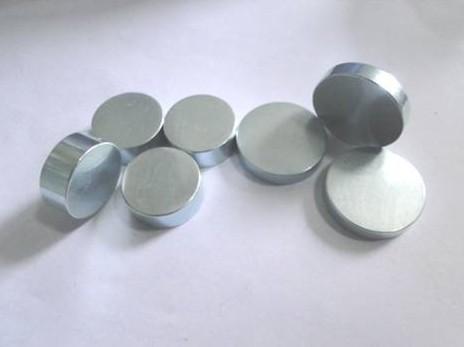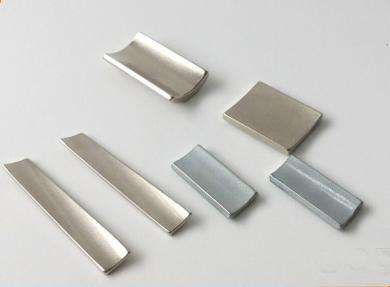How NdFeB Magnets are Made
1. Preparation and pretreatment of raw materials
The raw materials are pre treated by weighing, crushing, cutting and rust removal.
2. Melting
The pretreated raw materials, praseodymium and neodymium, pure iron, and iron boron are proportionally charged in proportion to the vacuum melting furnace, and the strip is carried out after high temperature melting under the protection of argon. The product has uniform composition, high degree of crystallinity, good organization consistency and avoids the formation of iron.

3. Hydrogen explosion
Hydrogen explosion (HD) technology uses the hydrogen absorption characteristics of rare earth intermetallic compounds to place Nd-Fe-B alloy in the hydrogen environment. Hydrogen is entered into the alloy by the thin layer of neodymium rich phase, cracking and breaking, and cracking along the neodymium rich layer to ensure the integrity of the main phase grain and the interphase of the neodymium rich grain. The HD process makes the NdFeB wafer loose, which greatly improves the pulverizing efficiency and reduces the production cost.
4. Pulverizing
Air pulverized powder is crushed by high speed impact of material itself, no wear and tear to the inner wall of the grinding chamber, no pollution, and the powder can be produced efficiently.

5. Molding orientation
The role of orientation is to make the chaotic orientation of the c axis of the particles in the magnetized direction move to the same direction, thereby obtaining the largest remanence. The main purpose of compression molding is to crush the powder into a certain shape and size, and at the same time maintain the grain orientation degree as far as possible in the magnetic field orientation. For the special-shaped magnets, the special mold tooling is used directly. The sintered magnets only need a little surface treatment to be put into use, greatly saving the material and subsequent processing.
6. Sintering
Sintering is a series of physical and chemical changes in high temperature, which is a simple and cheap way to change the microstructure of the material to improve the magnetic properties of the material. Sintering is the final forming process of materials, which has a very important effect on the density and microstructure of magnets.
7. Mechanical processing
After sintering, NdFeB magnet are all blank and need further mechanical processing to obtain products of various sizes and shapes. NdFeB magnets are brittle and have poor mechanical properties. They can only be used for grinding and cutting.
8. Surface treatment
Surface treatment of various rare earth permanent magnets, such as electrophoretic, galvanized, nickel and phosphating are needed, in order to ensure the appearance and corrosion resistance of the product.
9. Inspection and packaging of finished products
All kinds of magnetic properties, corrosion resistance and high temperature properties of the products are tested.
Pre: How to Judge the Quality of Sintered NdFeB Magnets?
Next: How to Judge Permanent Magnet Products







